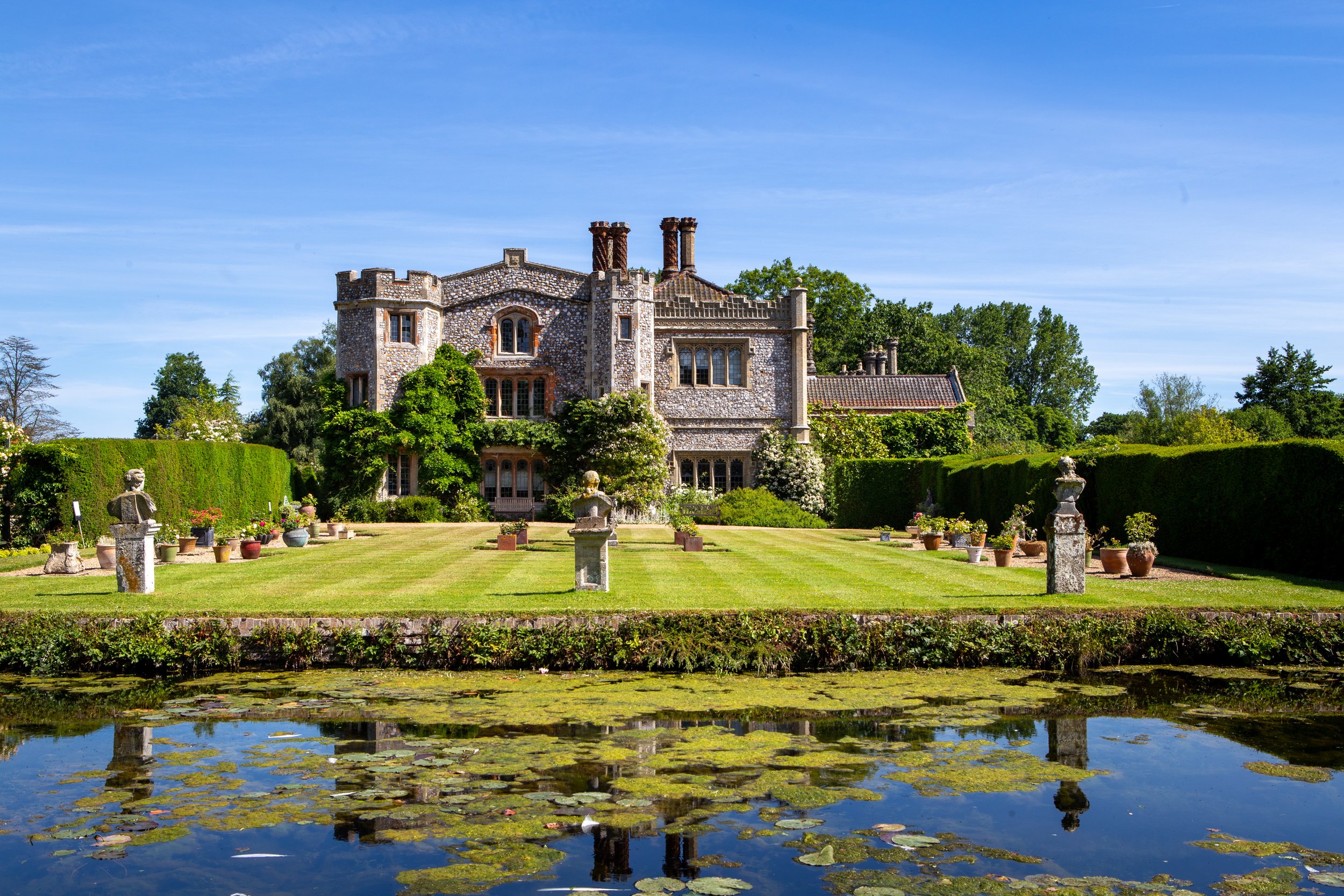
Mannington Estate is one of Norfolk’s hidden gems. Nestled away in the heart of the countryside…
History of the Estate
Mannington Estate is one of Norfolk’s hidden gems. Nestled away in the heart of the countryside sits Mannington Hall, originally built around 1460 for William Lumnor, a connection of a great Norfolk family - the Pastons.
The Hall retains its medieval appearance with castle-like crenelations, gothic windows, moat and drawbridge. Its facade of the hall is constructed from knapped local flint with two turrets standing proud on the South side of the building.
Mannington is surrounded by ancient woodlands which, together with its lakes and rivers, provides varied habitats for wildlife in a charming setting. We know that people have lived here for thousands of years, enhancing its charms with buildings in local materials.
The Walpole Family
Mannington was sold to Horatio, first Lord Walpole in the middle of the 18th century. Horatio was the diplomat brother of Sir Robert Walpole, known as our first Prime Minister. He purchased the Wolterton estate and then Mannington to extend his landholding; but in the middle of the 19th century a member of the family abandoned Wolterton and came to Mannington and created a Victorian gentleman’s idea of a medieval house. Mannington Hall is still a Walpole family home today.
The Legacy of the late Lord Walpole
He always said he was influenced in his love of gardens not only by his parents, grandmother, and aunt but also by the Headmaster at his Maidwell Hall prep school who was an RHS medal winner. He read Natural Sciences and Agriculture at Cambridge and took an early interest in conservation. At Mannington in the 1980s a countryside management scheme was introduced with public access and interpretation, long before these became so widely acceptable. He went on to influence others in environmental concerns in local county council and later in House of Lords committees.





